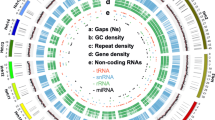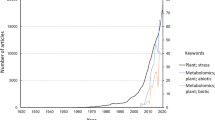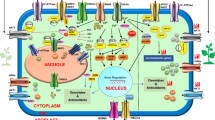Abstract
Bryum argenteum Hedw. is a desiccation tolerant bryophyte and belongs to one of the most important components of the biological soil crusts (BSCs) found in the deserts of Central Asia. Limited information is available on rehydration-responsive proteins in desiccation tolerant plants. As a complement to our previous research analyzing the rehydration transcriptome, we present a parallel quantitative proteomic effort to study rehydration-responsive proteins. Bryophyte gametophores were desiccated (Dry) and rehydrated for 2 h (R2) and 24 h (R24). Proteins from Dry, R2 and R24 gametophores were labeled by isobaric tags for relative and absolute quantitation (iTRAQ) to determine the relative abundance of rehydration-responsive proteins. A total of 5503 non-redundant protein sequences were identified and 4772 (86.7%) protein sequences were annotated using Gene Ontology (GO) terms and Pfam classifications. Upon rehydration 239 proteins were elevated and 461 proteins were reduced as compared to the desiccated protein sample. Differentially up-regulated proteins were classified into a number of categories including reactive oxygen species scavenging enzymes, detoxifying enzymes, Late Embryogenesis Abundant (LEA) proteins, heat shock proteins, proteasome components and proteases, and photosynthesis and translation related proteins. Furthermore, the results of the correlation between transcriptome and proteome revealed the discordant changes in the expression between protein and mRNA.
Similar content being viewed by others
References
Agarwal G, Jhanwar S, Priya P, et al. 2012. Comparative analysis of Kabuli chickpea transcriptome with Desi and wild chickpea provides a rich resource for development of functional markers. PLoS ONE, 7(12): e52443.
Bewley J D. 1979. Physiological aspects of desiccation tolerance. Annual Review of Plant Physiology, 30: 195–238.
Bittner F, Oreb M, Mendel R R. 2001. ABA3 is a molybdenum cofactor sulfurase required for activation of aldehyde oxidase and xanthine dehydrogenase in Arabidopsis thaliana. Journal of Biological Chemistry, 276(44): 40381–40384.
Bouché N, Fait A, Bouchez D, et al. 2003. Mitochondrial succinic-semialdehyde dehydrogenase of the γ-aminobutyrate shunt is required to restrict levels of reactive oxygen intermediates in plants. Proceedings of the National Academy of Sciences of the United States of America, 100(11): 6843–6848.
Brocker C, Vasiliou M, Carpenter S, et al. 2013. Aldehyde dehydrogenase (ALDH) superfamily in plants: gene nomenclature and comparative genomics. Planta, 237(1): 189–210.
Cui S X, Hu J, Guo S L, et al. 2012. Proteome analysis of Physcomitrella patens exposed to progressive dehydration and rehydration. Journal of Experimental Botany, 63(2): 711–726.
De Carvalho R C, Da Silva A B, Soares R, et al. 2014. Differential proteomics of dehydration and rehydration in bryophytes: evidence towards a common desiccation tolerance mechanism. Plant, Cell & Environment, 37(7): 1499–1515.
Djilianov D, Ivanov S, Moyankova D, et al. 2011. Sugar ratios, glutathione redox status and phenols in the resurrection species Haberlea rhodopensis and the closely related non-resurrection species Chirita eberhardtii. Plant Biology, 13(5): 767–776.
Eddy S R. 2011. Accelerated profile HMM searches. PLoS Computational Biology, 7(10): e1002195.
Etlinger J D, Goldberg A L. 1977. A soluble ATP-dependent proteolytic system responsible for the degradation of abnormal proteins in reticulocytes. Proceedings of the National Academy of Sciences of the United States of America, 74(1): 54–58.
Gaff D F, Oliver M. 2013. The evolution of desiccation tolerance in angiosperm plants: a rare yet common phenomenon. Functional Plant Biology, 40(4): 315–328.
Gao B, Zhang D Y, Li X S, et al. 2015. De novo transcriptome characterization and gene expression profiling of the desiccation tolerant moss Bryum argenteum following rehydration. BMC Genomics, 16: 416.
Glickman M H, Adir N. 2004. The proteasome and the delicate balance between destruction and rescue. PLoS Biology, 2(1): e13.
Gygi S P, Rochon Y, Franza B R, et al. 1999. Correlation between protein and mRNA abundance in yeast. Molecular and Cellular Biology, 19(3): 1720–1730.
Hogan D J, Riordan D P, Gerber A P, et al. 2008. Diverse RNA-binding proteins interact with functionally related sets of RNAs, suggesting an extensive regulatory system. PLoS Biology, 6(10): e255.
Hundertmark M, Hincha D K. 2008. LEA (Late Embryogenesis Abundant) proteins and their encoding genes in Arabidopsis thaliana. BMC Genomics, 9(1): 118.
Kirch H H, Bartels D, Wei Y L, et al. 2004. The ALDH gene superfamily of Arabidopsis. Trends in Plant Science, 9(8): 371–377.
Kranner I, Grill D. 1996. Significance of thiol-disulfide exchange in resting stages of plant development. Botanica Acta, 109(1): 8–14.
Kranner I. 2002. Glutathione status correlates with different degrees of desiccation tolerance in three lichens. New Phytologist, 154(2): 451–460.
Kranner I, Zorn M, Turk B, et al. 2003. Biochemical traits of lichens differing in relative desiccation tolerance. New Phytologist, 160(1): 167–176.
Lan P, Li W F, Schmidt W. 2012. Complementary proteome and transcriptome profiling in phosphate-deficient Arabidopsis roots reveals multiple levels of gene regulation. Molecular & Cellular Proteomics, 11(11): 1156–1166.
Li J H, Li X R, Chen C Y. 2014. Degradation and reorganization of thylakoid protein complexes of Bryum argenteum in response to dehydration and rehydration. The Bryologist, 117(2): 110–118.
Li X R, Xiao H L, Zhang J G, et al. 2004. Long-term ecosystem effects of sand-binding vegetation in the Tengger Desert, Northern China. Restoration Ecology, 12(3): 376–390.
Lohse M, Nagel A, Herter T, et al. 2014. Mercator: a fast and simple web server for genome scale functional annotation of plant sequence data. Plant, Cell & Environment, 37(5): 1250–1258.
Maere S, Heymans K, Kuiper M. 2005. BiNGO: a Cytoscape plugin to assess overrepresentation of Gene Ontology categories in Biological Networks. Bioinformatics, 21(16): 3448–3449.
Maestre F T, Quero J L, Gotelli N J, et al. 2012. Plant species richness and ecosystem multifunctionality in global drylands. Science, 335(6065): 214–218.
Oliver M J, Bewley J D. 1984. Plant desiccation and protein synthesis. VI. Changes in protein synthesis elicited by desiccation of the moss Tortula ruralis are effected at the translational level. Plant Physiology, 74(4): 923–927.
Oliver M J. 1991. Influence of protoplasmic water loss on the control of protein synthesis in the desiccation-tolerant moss Tortula ruralis: ramifications for a repair-based mechanism of desiccation tolerance. Plant Physiology, 97(4): 1501–1511.
Oliver M J, Wood A J, O’Mahony P. 1997. How some plants recover from vegetative desiccation: a repair based strategy. Acta Physiologiae Plantarum, 19(4): 419–425.
Oliver M J, Tuba Z, Mishler B. 2000a. The evolution of vegetative desiccation tolerance in land plants. Plant Ecology, 151(1): 85–100.
Oliver M J, Velten J, Wood A. 2000b. Bryophytes as experimental models for the study of environmental stress tolerance: Tortula ruralis and desiccation-tolerance in mosses. Plant Ecology, 151(1): 73–84.
Oliver M J, Dowd S, Zaragoza J, et al. 2004. The rehydration transcriptome of the desiccation-tolerant bryophyte Tortula ruralis: transcript classification and analysis. BMC Genomics, 5: 89.
Oliver M J, Hudgeons J, Dowd S E, et al. 2009. A combined subtractive suppression hybridization and expression profiling strategy to identify novel desiccation response transcripts from Tortula ruralis gametophytes. Physiologia Plantarum, 136(4): 437–460.
Oliver M J, Bewley J D. 2010. Desiccation-tolerance of plant tissues: a mechanistic overview. In: Janick J. Horticultural Reviews. New York: John Wiley & Sons, Inc., 171–213.
Peng X Y, Qin Z L, Zhang G P, et al. 2015. Integration of the proteome and transcriptome reveals multiple levels of gene regulation in the rice dl2 mutant. Frontiers in Plant Science, 6: 351.
Proctor M C F, Oliver M J, Wood A J, et al. 2007. Desiccation-tolerance in bryophytes: a review. The Bryologist, 110(4): 595–621.
Rensing S A, Lang D, Zimmer A D, et al. 2008. The Physcomitrella genome reveals evolutionary insights into the conquest of land by plants. Science, 319(5859): 64–69.
Reynolds J F, Smith D M S, Lambin E F, et al. 2007. Global desertification: building a science for dryland development. Science, 316(5826): 847–851.
Ross P L, Huang Y N, Marchese J N, et al. 2004. Multiplexed protein quantitation in Saccharomyces cerevisiae using amine-reactive isobaric tagging reagents. Molecular & Cellular Proteomics, 3(12): 1154–1169.
Smoot M E, Ono K, Ruscheinski J, et al. 2011. Cytoscape 2.8: new features for data integration and network visualization. Bioinformatics, 27(3): 431–432.
Soufi B, Kelstrup C D, Stoehr G, et al. 2009. Global analysis of the yeast osmotic stress response by quantitative proteomics. Molecular BioSystems, 5(11): 1337–1346.
Stark L R. 2017. Ecology of desiccation tolerance in bryophytes: a conceptual framework and methodology. The Bryologist, 120(2): 130–165.
Thimm O, Bläsing O, Gibon Y, et al. 2004. MAPMAN: a user-driven tool to display genomics data sets onto diagrams of metabolic pathways and other biological processes. The Plant Journal, 37(6): 914–939.
Usadel B, Nagel A, Thimm O, et al. 2005. Extension of the visualization tool MapMan to allow statistical analysis of arrays, display of coresponding genes, and comparison with known responses. Plant Physiology, 138(3): 1195–1204.
Van Der Hoorn R A. 2008. Plant proteases: from phenotypes to molecular mechanisms. Annual Review of Plant Biology, 59: 191–223.
Wang X Q, Yang P F, Liu Z, et al. 2009. Exploring the mechanism of Physcomitrella patens desiccation tolerance through a proteomic strategy. Plant Physiology, 149(4): 1739–1750.
Wollers S, Heidenreich T, Zarepour M, et al. 2008. Binding of sulfurated molybdenum cofactor to the C-terminal domain of ABA3 from Arabidopsis thaliana provides insight into the mechanism of molybdenum cofactor sulfuration. Journal of Biological Chemistry, 283(15): 9642–9650.
Wood A J. 2007. The nature and distribution of vegetative desiccation-tolerance in hornworts, liverworts and mosses. The Bryologist, 110(2): 163–177.
Wood A J, Duff R J, Oliver M J. 1999. Expressed sequence tags (ESTs) from desiccated Tortula ruralis identify a large number of novel plant genes. Plant and Cell Physiology, 40(4): 361–368.
Wood A J, Oliver M J. 1999. Translational control in plant stress: the formation of messenger ribonucleoprotein particles (mRNPs) in response to desiccation of Tortula ruralis gametophytes. The Plant Journal, 18(4): 359–370.
Xiong L, Zhu J K. 2002. Molecular and genetic aspects of plant responses to osmotic stress. Plant, Cell & Environment, 25(2): 131–139.
Zaiss D M W, Standera S, Kloetzel P M, et al. 2002. PI31 is a modulator of proteasome formation and antigen processing. Proceedings of the National Academy of Sciences of the United States of America, 99(22): 14344–14349.
Zhang J J, Zhang L, Qiu J K, et al. 2015. Isobaric tags for relative and absolute quantitation (iTRAQ)-based proteomic analysis of Cryptococcus humicola response to aluminum stress. Journal of Bioscience and Bioengineering, 120(4): 359–363.
Zhang Y M, Chen J, Wang L, et al. 2007. The spatial distribution patterns of biological soil crusts in the Gurbantunggut Desert, Northern Xinjiang, China. Journal of Arid Environments, 68(4): 599–610.
Zheng Y, Jiao C, Sun H H, et al. 2016. iTAK: a program for genome-wide prediction and classification of plant transcription factors, transcriptional regulators, and protein kinases. Molecular Plant, 9(12): 1667–1670.
Zimmer A D, Lang D, Buchta K, et al. 2013. Reannotation and extended community resources for the genome of the non-seed plant Physcomitrella patens provide insights into the evolution of plant gene structures and functions. BMC Genomics, 14: 498.
Acknowledgements
This research was financially supported by the Scientific Service Project of Chinese Academy of Sciences (TSS-2015-014-FW-4-3) and the National Science Foundation of China-Xinjiang Talent Youth Project (U1403302).
Author information
Authors and Affiliations
Corresponding author
Rights and permissions
About this article
Cite this article
Gao, B., Zhang, D., Li, X. et al. Desiccation tolerance in bryophytes: the rehydration proteomes of Bryum argenteum provide insights into the resuscitation mechanism. J. Arid Land 10, 152–167 (2018). https://doi.org/10.1007/s40333-017-0033-3
Received:
Revised:
Accepted:
Published:
Issue Date:
DOI: https://doi.org/10.1007/s40333-017-0033-3




